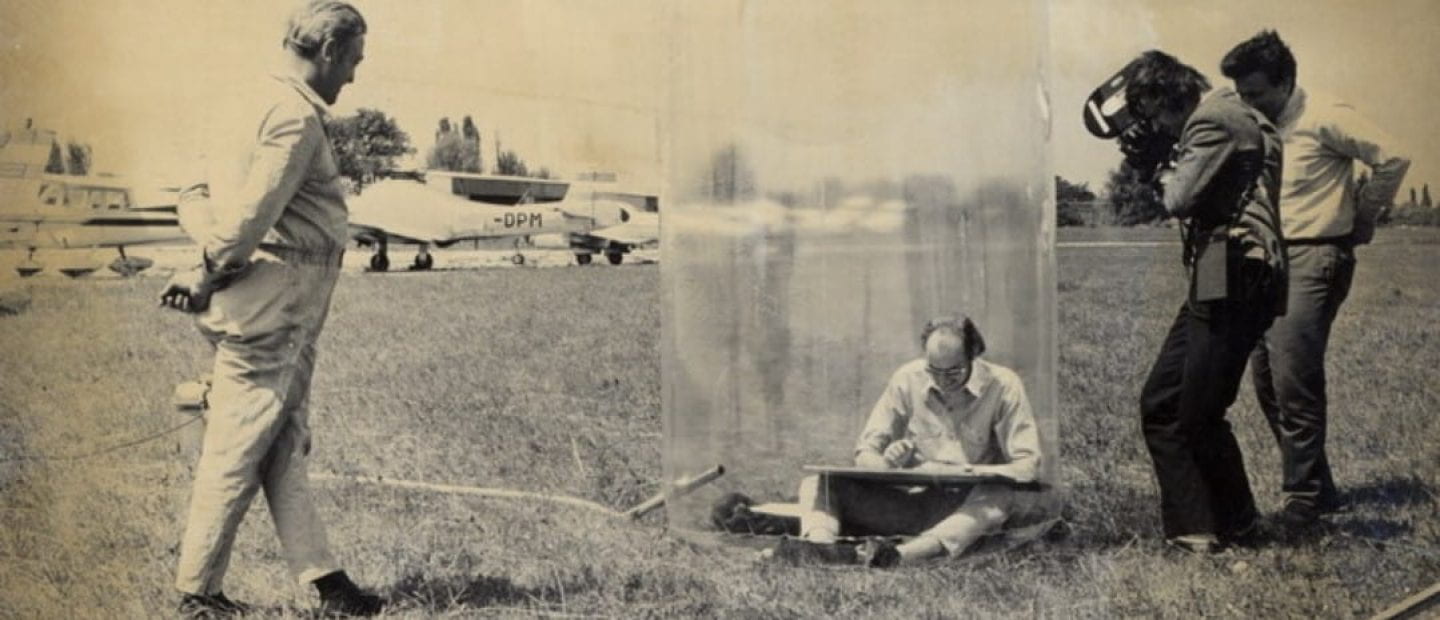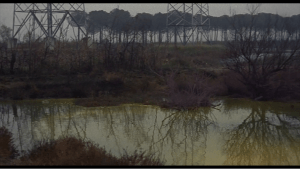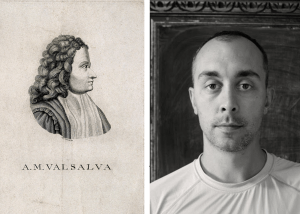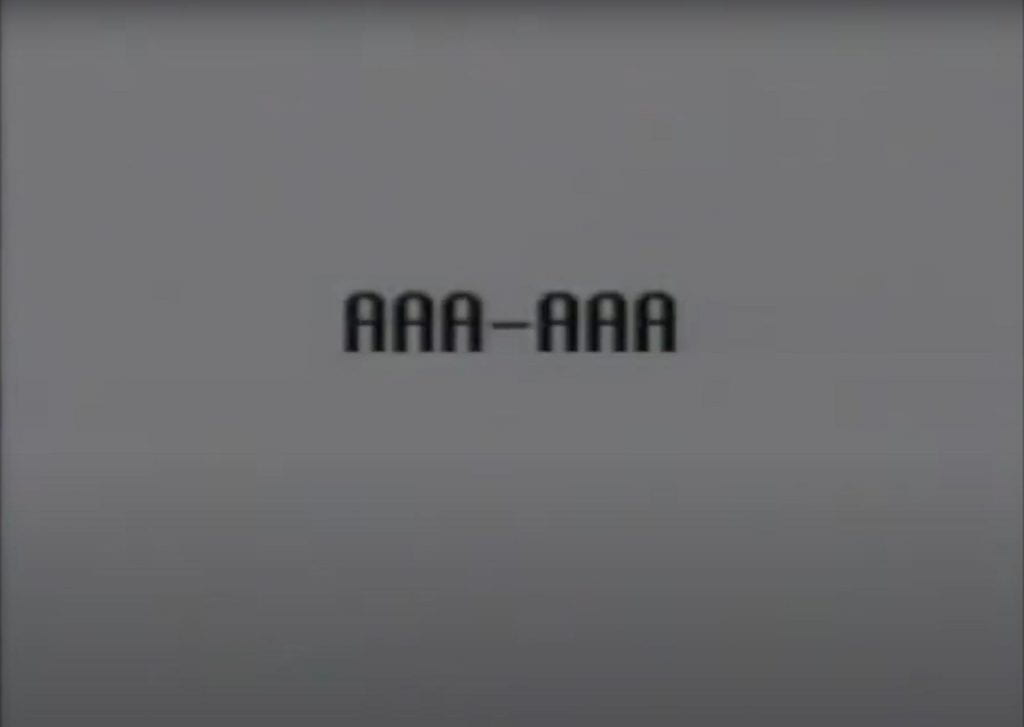Antonioni’s “Red Desert” : Colors of Madness
My presentation on Michelangelo Antonioni’s Red Desert (1964) was but an attempt to explore this mysterious movie. In this short-written account, I include the structure of my talk as well as some of the key arguments.
Red Desert isn’t the development of Giuliana and Corrado’s friendship – at least not only. Seemingly unrelated events happen and find their way into the movie (a tale told to a child, a visit to a newly bought room). Indeed, it is based less on narration than on poetic parallelisms & repetitions which transcend chronology and storytelling. I therefore started by highlighting how the opening scene makes Monica Vitti’s Giuliana stand out in the image. The camera itself distances her from the polluted postmodern world of Ravenna. And posing what would be my focal question in exploring Red Desert: how it managed to confront and combine the view of a traumatized character and the grim sight of an ecological disaster. My presentation explored this question from two complementary angles: the study of colors in Antonioni’s “formalist” cinema, and the question of Giuliana’s supposed illness.
- Colors
In its early production, the movie was titled Celeste e Verde (Sky-blue and green). The emphasis was, and is put on colors and on the way they interact with each other in a living painting. “I want to paint the film as one paints the canvas. I want to invent the color relationships, and not limit myself to photographing only natural colors”, said Antonioni. As a practical note, he and Carlo de Palma, his director of photography, re-painted some of the places the movie was filmed in. For instance, I analyze this sickly pond as one of the alterations Red Desert makes to a supposed “nature”:
I go on to deal with the red room in the harbor shack. Air becomes an actor there, as it seems full of maddening eroticism. The libertine spirit in which bodies move and intertwine grows into madness, and in the end the room is destroyed, as the characters flee the shack into a dreadful fixed shot of a foggy pier.
Red is affirmed as a structure of recurring colors and objects, which identify with violence. The violence of industry and the violence of eroticism.
This low-angle shot in Medicina embodies how this “red industry” builds itself against the world, just as in the opening scene the camera presented Giuliana against the factories and their workers.
- Who’s ill ?
The movie presents Giuliana as traumatized and alienated by her accident, but also, in an intriguing way, suddenly estranged by this new clairvoyance. In the air, and on white walls, Giuliana hears and sees things other characters do not; sometimes, even the viewer cannot. That which is white to us is colored to her, of violent red, like a cage of monsters. This is why Corrado cannot “help” her. Especially not by forcing himself onto her, in the end of the hotel room scene, which is more problematic to watch today than ever.
Throughout the movie, Giuliana is considered “deranged” or ill, mostly by men who instinctively treat her as an object whose “gears don’t quite mesh”. But Giuliana’s illness is more in the air than out of her accident. What if we reverse this ?
Giuliana is the character who looks at the fumes (thinks they are a problem), at the colors, and hears the singing and the screams. Isn’t everyone else crazy to keep breathing and walking around smoke, deaf and blind? She is, after all, the character for whom “everything is singing”.
This reflection made me end my presentation by evoking the case of Marguerite Duras’ Le Vice-consul. In this novel, two characters keep humming ‘India’s Song’, and neither the reader nor the other characters know the song. It recalls a deep past which links these two together. Hearing voices and hearing screams, recalling ancient songs, is in Duras’ novel a paradoxical mark of sanity. Being deaf to the screams of the dead, on the other hand, is the true illness in her writing. Which I think might also be the case for Antonioni.
After the class discussion, Cecily’s comment stood out and added to my scarce knowledge of Antonioni : she talked about Monica Vitti’s continuous missed embraces in Antonioni’s movies. In many of them, she plays a woman who tries to blend into the world, looking for help and safety in them – but keeps missing it, sometimes by an inch. Giuliana dreams of being as small as possible, as protected as possible. In the red room, most confined, she acts most natural. “Help me”, said to Corrado in the hotel room, means “Protect me from the red that’s in the air”. Corrado reacts to the world’s aggressiveness by always fleeing to a new place, always leaving, and forgetting. But Giuliana sees too much, experiences too much for her to forget the world. Corrado’s sexual violence obviously won’t make her forget or escape the pain; on the contrary, it reinforces it. Vitti’s fascinating twitches help representing this violence inflincted on the individual, this impossible escape of the polluted (in many ways) world, in a striking way.
Léon Pradeau







Leave a Reply
You must be logged in to post a comment.